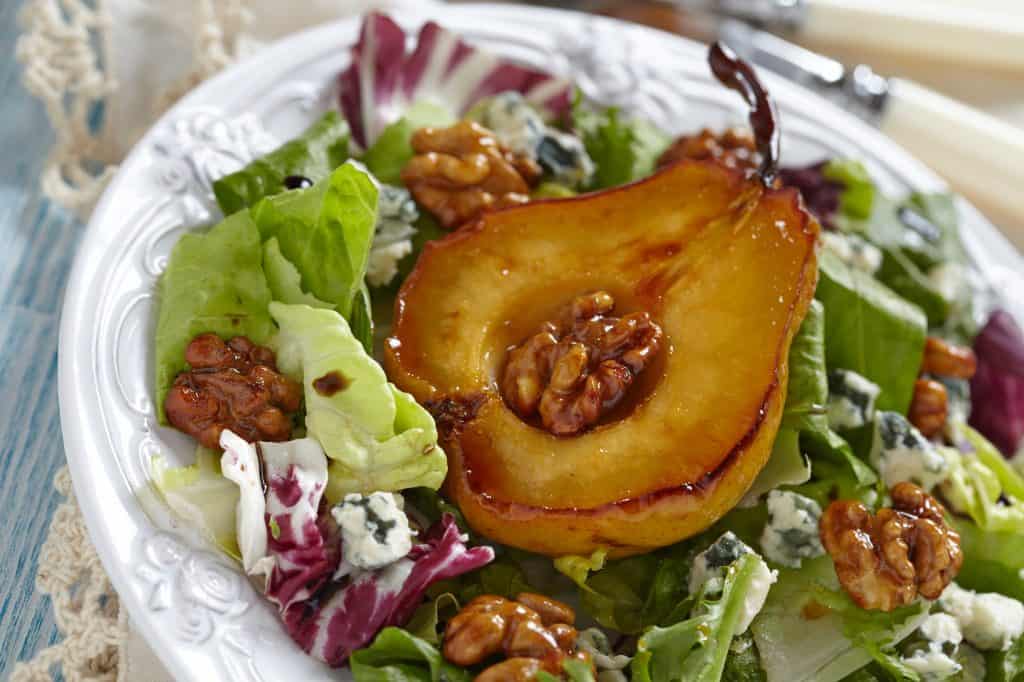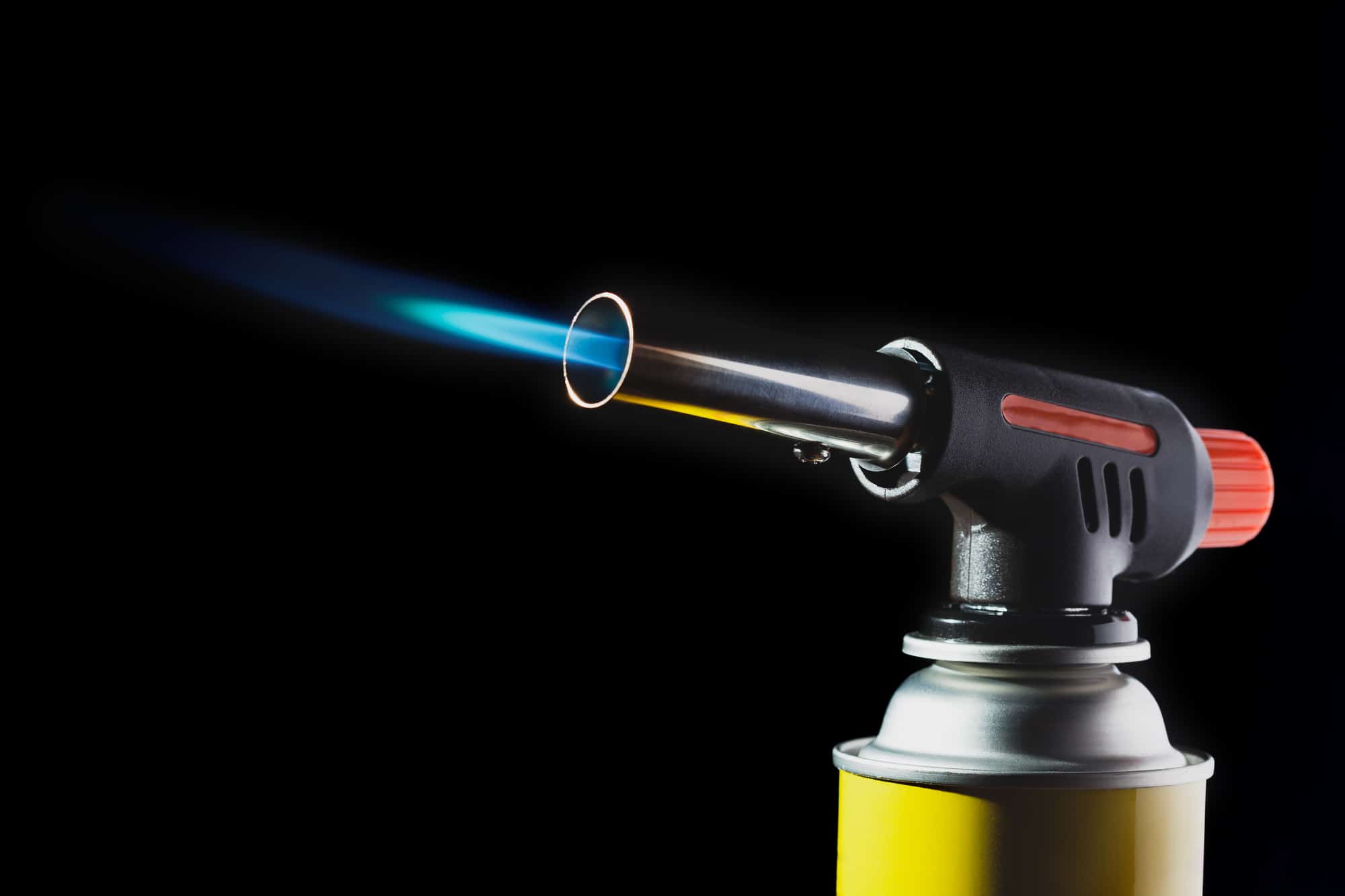If you’ve ever tasted a delicious crème brûlée caramelized with a kitchen torch, you’ll understand why it’s a must-have tool for any chef. However, because these torches use gases like propane and butane, you might be concerned about the gas getting into your food during searing.
You can cook food using a butane or propane torch because both gases are pure alkanes that burn cleanly and don’t leave any byproducts on your food. While they’re both highly flammable gases, they’re still safe to use in cooking torches as long as you handle them properly.
In the rest of this article, I’ll explain everything you need to know about butane and propane torches and food safety. I’ll also show you how to use them to get the best results and what safety precautions you should follow.
Why a Butane or Propane Touch Is Safe To Use on Food
Butane and propane both burn to produce water and carbon dioxide in the presence of oxygen. Although carbon dioxide gas, also known as CO2, may affect the respiratory system at higher concentrations, it’s unlikely to change your food’s taste, smell, or color.
It’s also important to note that incomplete combustion of butane or propane produces carbon monoxide (CO) or soot, and in some cases, both. However, you likely won’t have to worry about this risk. The released carbon monoxide won’t get into your food unless it is being produced in high concentrations. Furthermore, even when the food you’re searing absorbs CO, it doesn’t cause food poisoning as carbon monoxide is only hazardous if you inhale it.
Does a Butane or Propane Torch Leave a Taste on Food?
Butane and propane torches don’t leave an aftertaste on food because the flame is fully oxidized. Also, unless the burning temperature is too high, there should be no unusual taste or smell.
When cooking food with a kitchen torch, you should always ensure that the flame is short and dark blue. This is because propane and butane are usually mixed with ethanethiol or other substances with strong odors to allow you to detect gas leaks.
So, if you’re using a reducing flame (that is, a flame that is not hot enough), it won’t oxidize all these gases, and they may absorb into your food, leaving an unpleasant taste. This taste is often referred to as torch taste.
If your butane or propane torch produces a large yellow flame at the tip, it’s an indication that the flame is not hot enough. You will need to adjust the fuel flow until the flame is a fully oxidizing flame – that is, a dark blue flame that produces a hissing sound.
Since carbon monoxide is produced when there is limited oxygen, I suggest opening your windows and ensuring the area is well ventilated when using a butane or propane torch. Proper ventilation ensures that the gas is completely oxidized and removes any byproducts from the kitchen.
Torch taste also happens when the heat is too high. Controlling the temperature before aiming the torch at your food is essential to reducing torch taste.
Lastly, when igniting the torch, it’s best to keep it away from the food as far as possible. Allow the flame to turn blue to white before pointing it at your food. Doing this helps you avoid releasing raw gas into your food during the ignition process.
Also, if you’re having trouble lighting yours, we wrote an article on how to troubleshoot it!
What Can You Cook With a Butane or Propane Torch?
You can cook a variety of foods with a butane and propane torch, including crème brûlées and other desserts like s’mores, caramelized fruits, grilled vegetables, roast peppers, seared meats, and more.
One of the most common uses of a butane and propane torch is making a classic crème brûlée. However, this isn’t the only use of a kitchen torch, and it can be the perfect tool to make your cooking look more elegant and taste delicious.
Some other uses of butane/propane torches include:
- Caramelize fruits: You can use your butane or propane torch to add sweetness to a grapefruit (or any other fruit!) at breakfast or brunch. Just cut your grapefruit in half and sprinkle sugar on the halved parts. Use your torch to burn and melt the sugar until it caramelizes on the surface of the fruit.
- Grill vegetables: Your torch is great for charring vegetables like tomatoes, eggplants, lettuce, romaine, or serrano peppers. All you need to do is spread them on sheet metal and brush them evenly with the flame. You can also coat the veggies with olive oil, fresh herbs, or vinegar before or after charring.
- Roast peppers: A kitchen torch is a super-easy way to roast peppers. You can, of course, do so using a gas broiler on the stovetop. However, a butane/propane torch allows you to direct the flame at the peppers with more precision. All you need to do is pick up the pepper with your grilling fork and blast the heat on it until the skin is softened and blackened.

Other uses of butane and propane torches include:
- Melting tuna or salmon
- Making s’mores and other desserts
- Searing meat
- Melting and browning cheese
- Peeling peppers
- Finishing a gratin
How To Use a Butane/Propane Torch in the Kitchen
When cooking with a torch, it’s best to keep the flame at some distance away from your food and avoid concentrating it on a single spot. Keeping the flame focused on one area can burn the food. Instead, move it around in a sweeping motion to evenly distribute the heat.
A propane or butane torch can be a dangerous tool if not handled properly as the gases are highly flammable.
If you don’t have any experience using a torch, there are a few safety precautions to keep in mind, including:
- Always check the torch for leaks before igniting it. Use the soap bubble test rather than the flame test to detect leaks.
- Keep the gas container away from heat sources and direct sunlight.
- Remove kitchen towels, papers, and food scraps from the area before using the torch.
- Keep the torch and the canister away from the reach of children and pets.
- Don’t smoke when using butane or propane torches.
- Ensure your area is well-ventilated when working with butane or propane
Final Thoughts
If used properly, butane and propane torches are completely safe for use in the kitchen and won’t cause your food to go bad or lead to you developing food poisoning. Additionally, they don’t leave a taste on food when used appropriately.
However, there are some precautions you should take when using these torches. Ensure that the cooking space is well-ventilated before you start using a torch. Also, point the torch away from the food when igniting it, and don’t aim it at food until you see a dark blue flame. Ensure you don’t overfeed the flame, as this can result in torch taste in your food.
Sources
- Iupilon: Can You Use a Butane Torch On Food?
- Great British Chefs: How to Use a Blowtorch
- ButaneSource.com: Best Safety Practices When Handling Butane
- Wikipedia: Butane
- Wikipedia: Propane
- The Morning Call: Explain It to Me: Is packaged meat preserved with carbon monoxide safe?
- Wikipedia: Oxidizing and reducing flames
- The Spruce Eats: 9 Uses for a Culinary Torch
- NIH: Carbon dioxide poisoning
- Wikipedia: Alkane
- ELGAS: Soapy Water Leak Test: How Do You Check for Gas Cylinder Leaks, How to Detect a Gas Leak in Your Home – Gas Leak Soap Bubbles – Soap Test for Gas Leak

